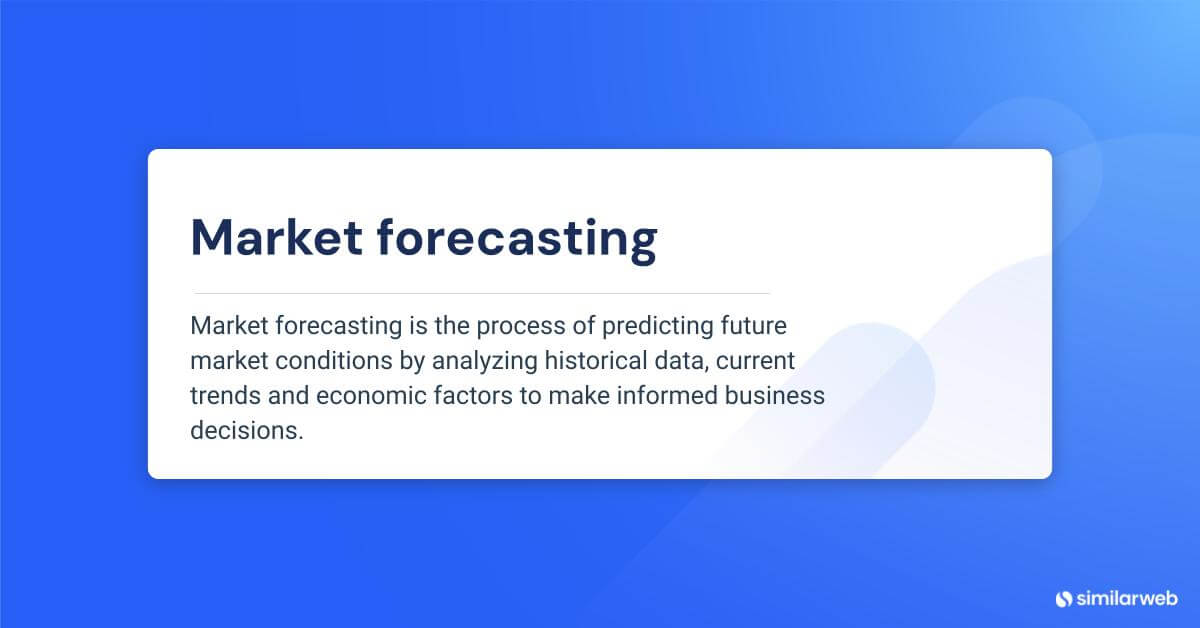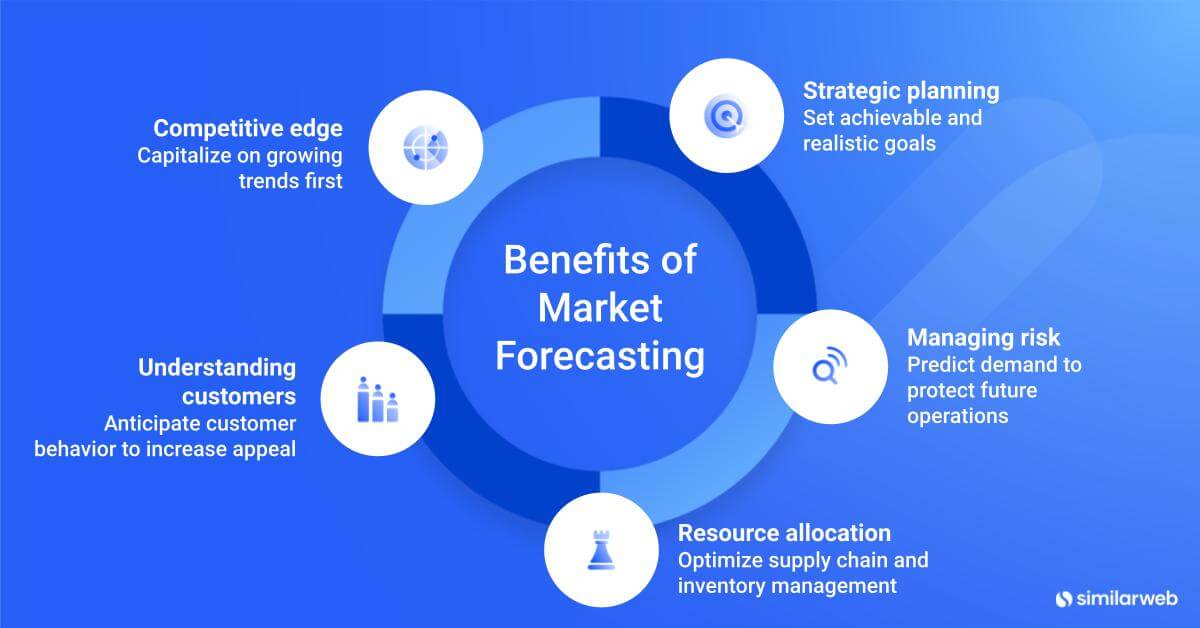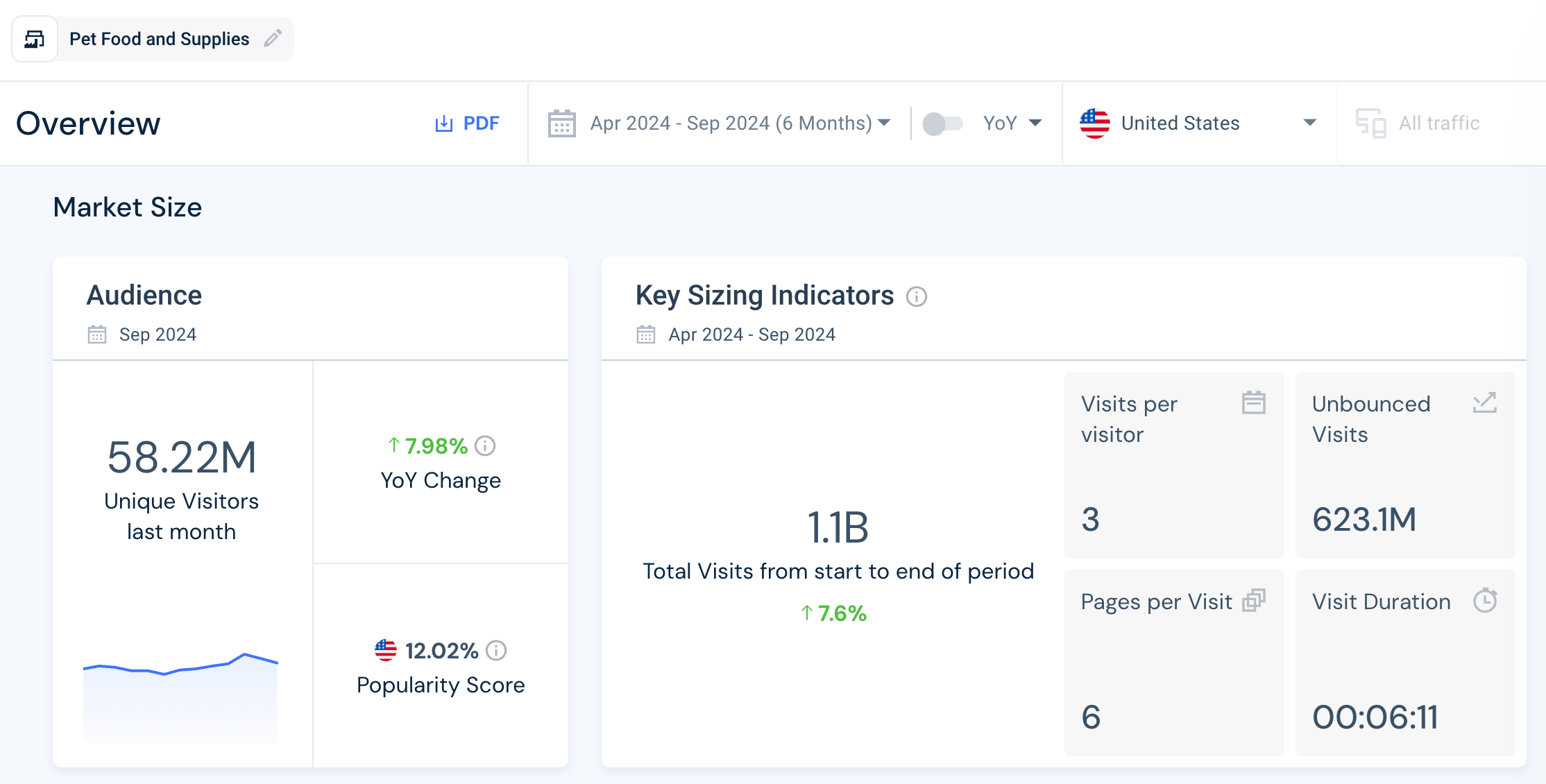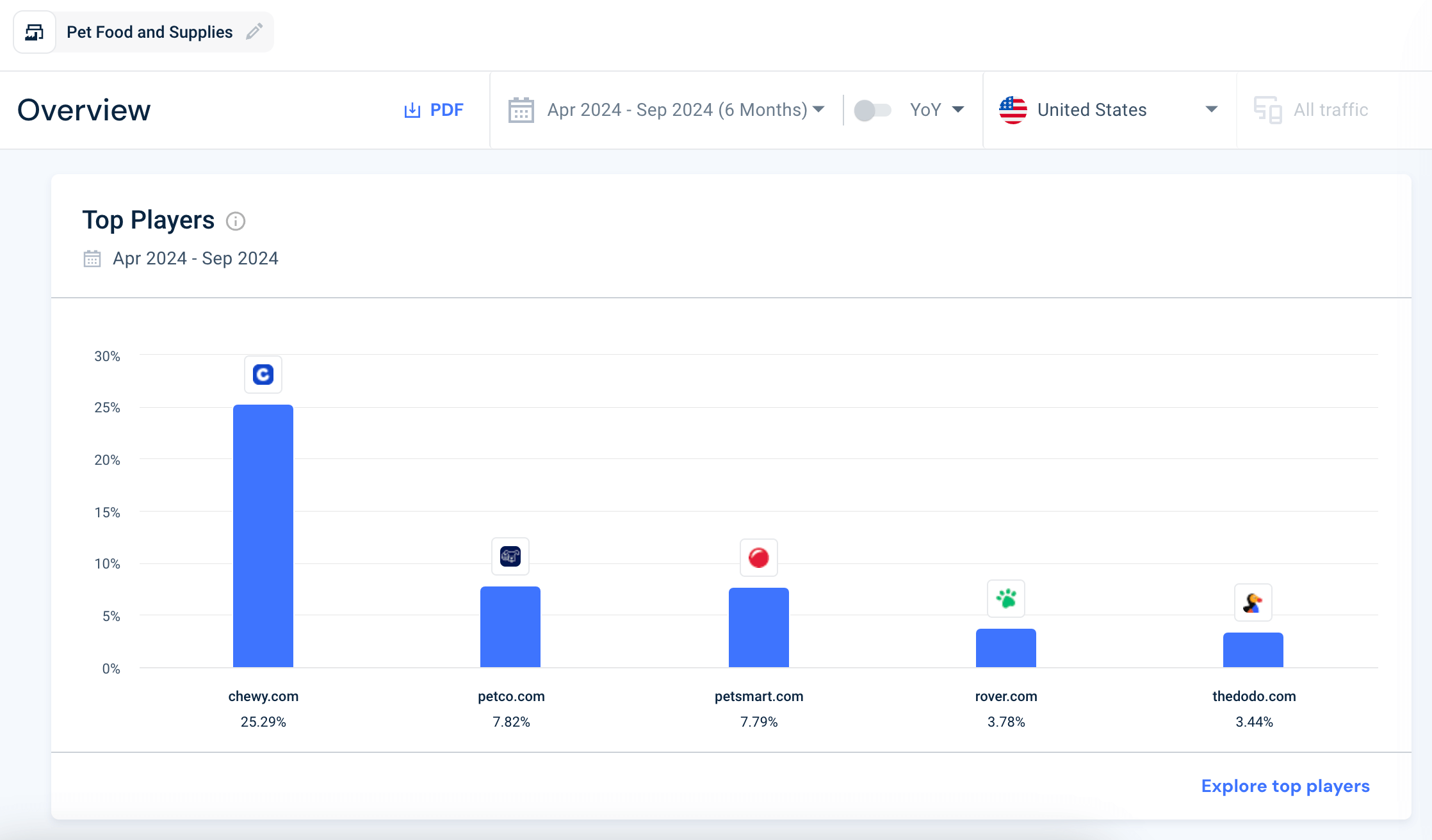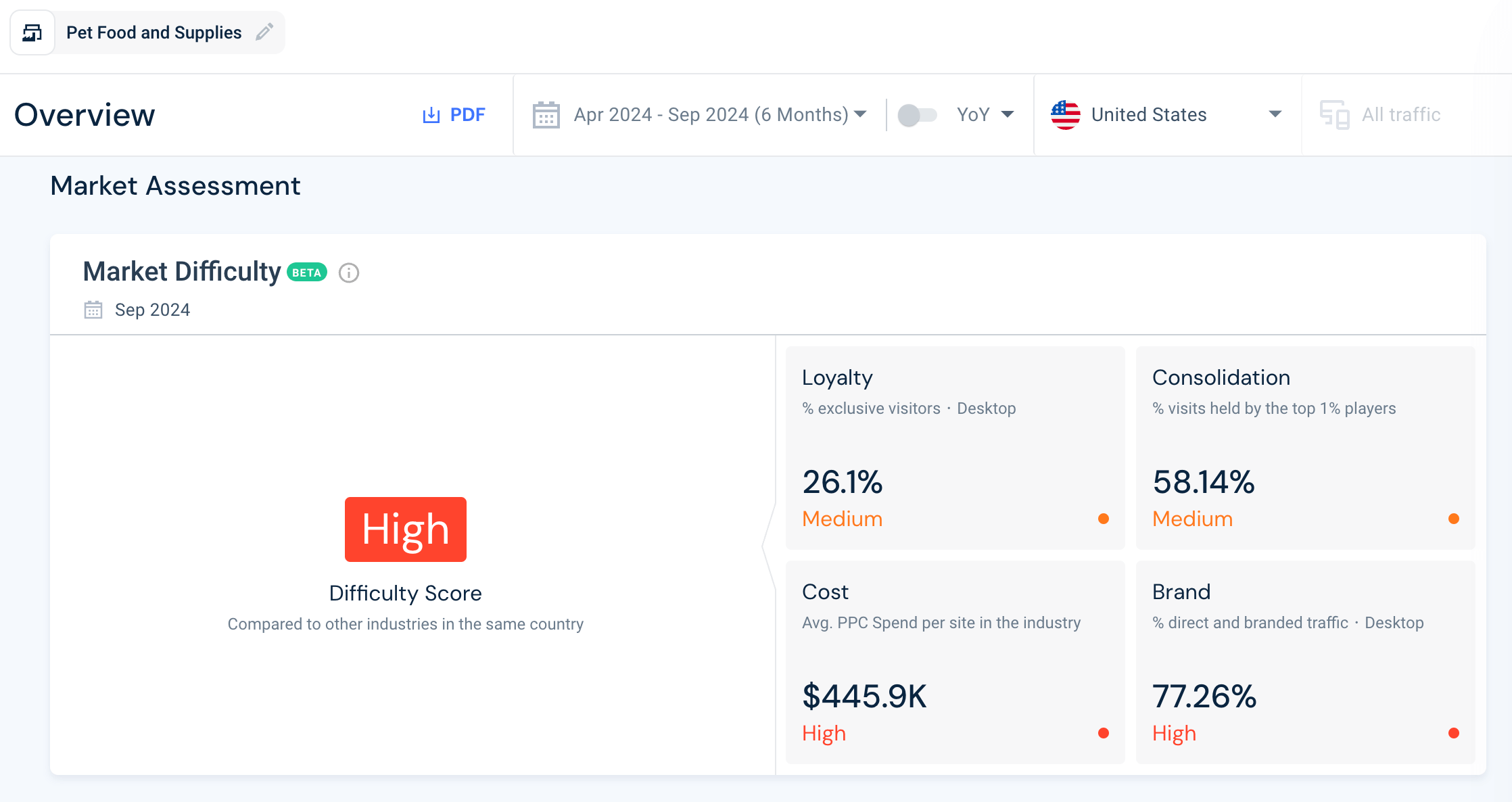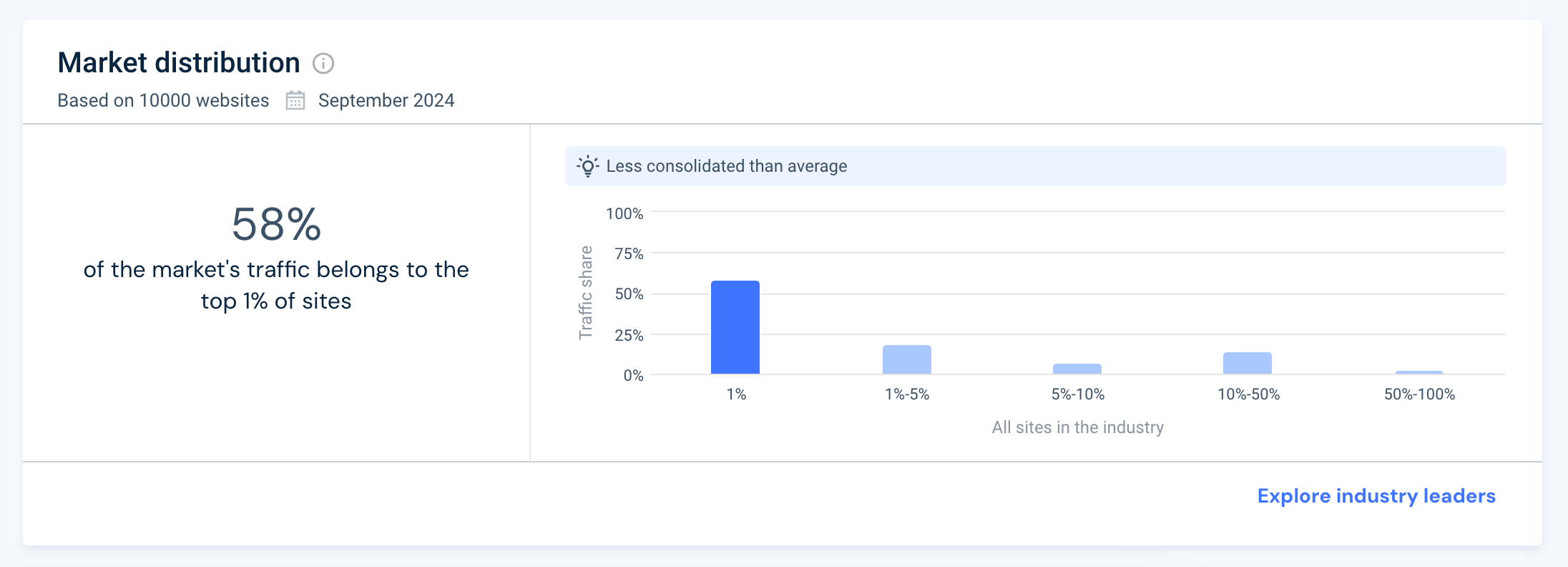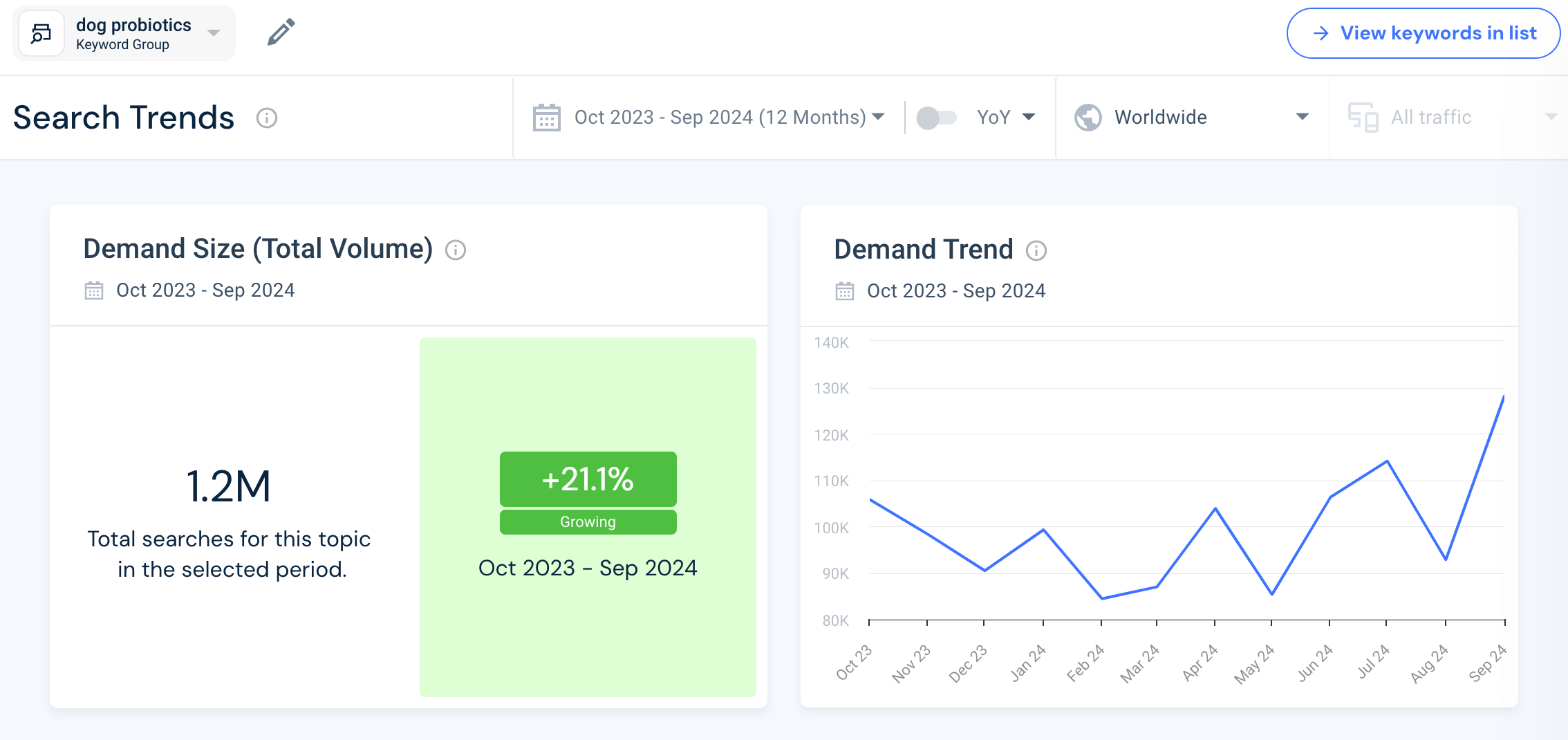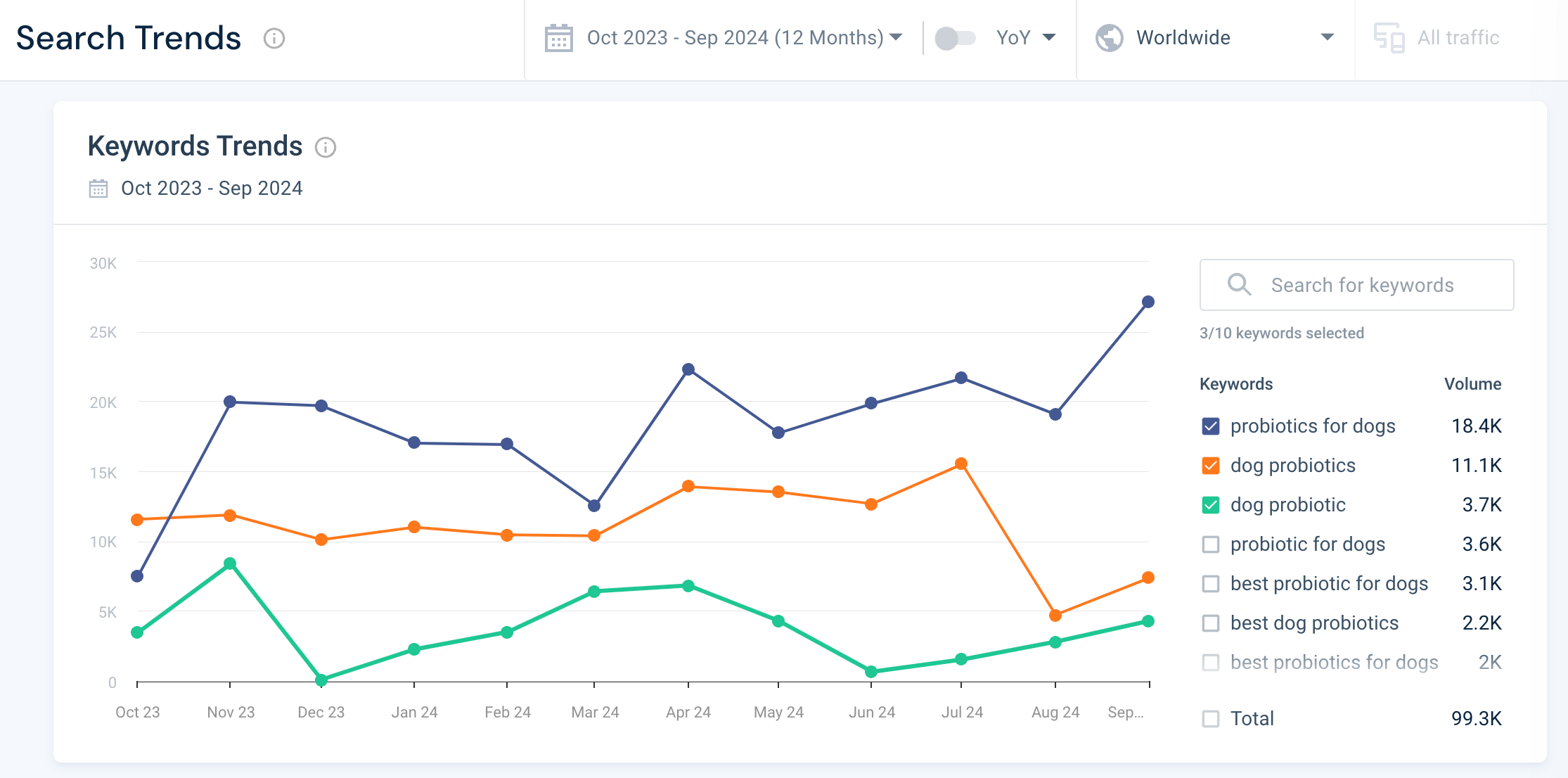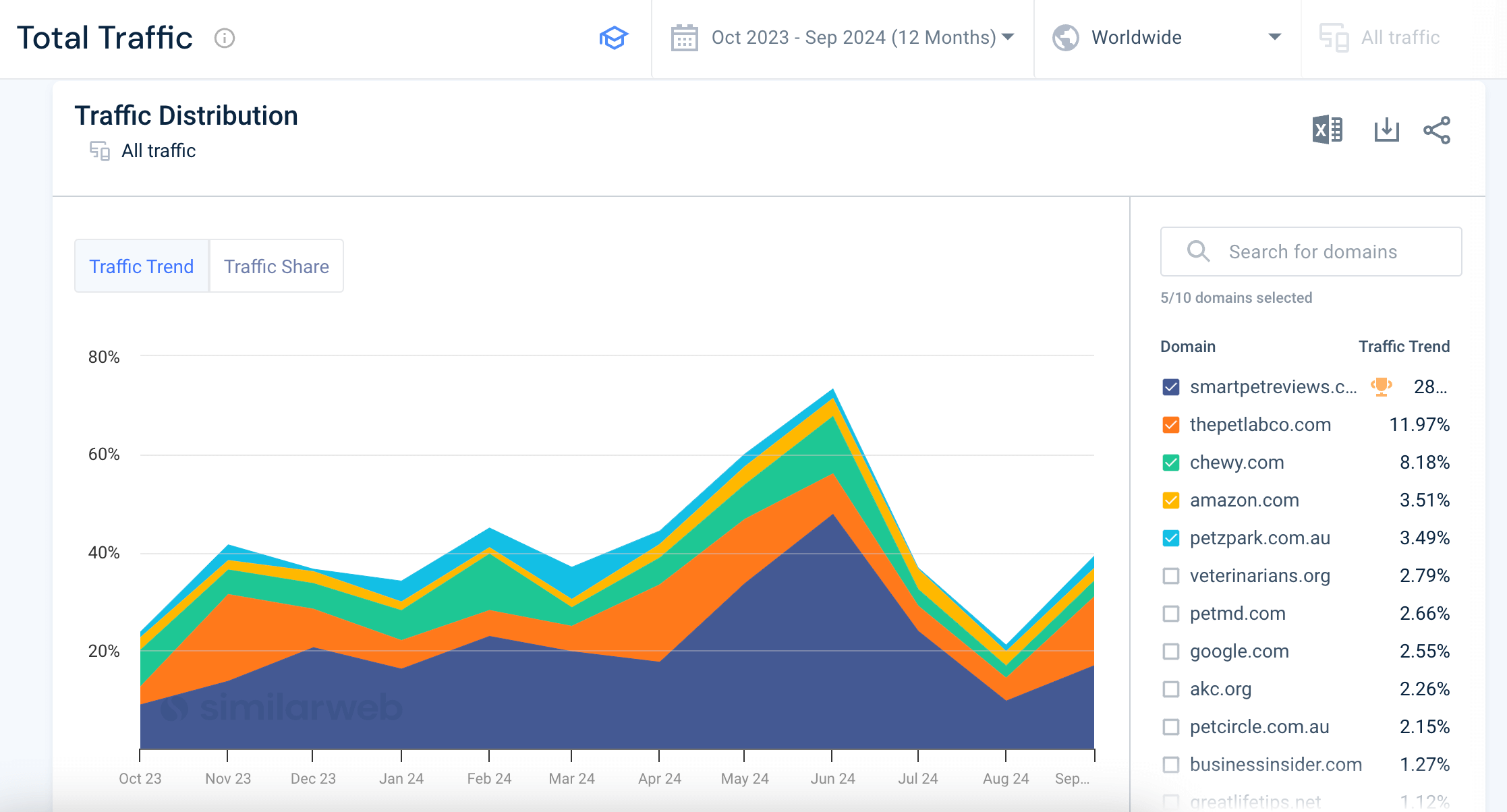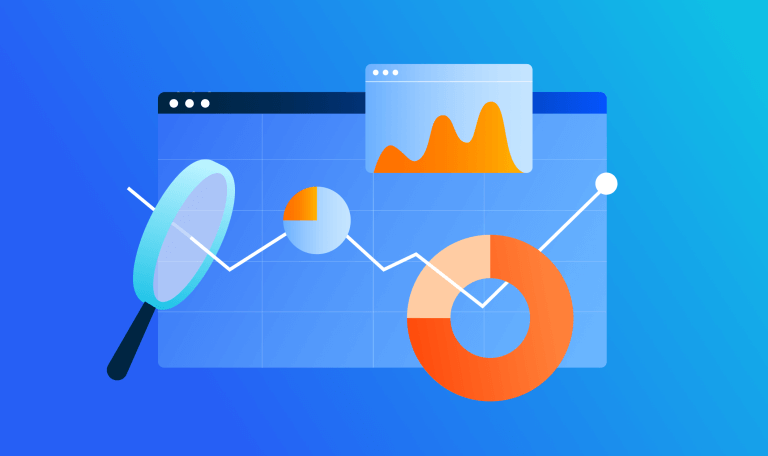What is Market Forecasting? The Art of Predicting Future Trends

One trait of successful businesses is their ability to spot market changes before their competitors.
This is where market forecasting comes in. It offers insights on where to invest, when to pivot, and how to outpace the competition. And the page you’re reading right now offers a straightforward approach to mastering it.
You’ll discover how to use real data to predict trends, plan effectively, and make decisions that keep or put you on the front foot.
It will cover:
- Techniques for predicting market trends using data
- Planning strategies to stay ahead
- Decision-making approaches to outperform competitors
Successful businesses thrive by anticipating shifts in customer demand and adapting to industry changes. But first, we need to understand what it is.
What is market forecasting?
Market forecasting comes in many forms. However, it uses historical data, current trends, and analysis to predict future market conditions.
Forecasts can be short-term (a few months), medium-term (a few years), or long-term (a decade or more), depending on your business’s needs.
It is essential to make decisions based on what’s coming tomorrow. This could range from resource allocation to supply chain management and strategic direction. While in its latest form, market forecasting has evolved to incorporate machine learning and AI to provide real-time on-the-moment insights.
Key market forecasting ingredients
Forecasting market trends involves analyzing data, identifying patterns, and making informed decisions quickly. In other words, connecting the dots, spotting patterns, and acting fast.
Sounds simple, right?
Here, we examine what it entails and different ways to do it:
Using the past to predict the future
Past trends are our main indicator of the market’s direction. Historical data—from sales to customer behavior—find patterns that indicate future shifts.
However, it’s essential to remain aware of biases. A good example is recency bias (an overemphasis on recent events).
“The idea that the future is unpredictable is undermined every day by the ease with which the past is explained.” Prof. Daniel Kahneman
It’s important to continuously update forecasts based on new information rather than assuming trends will remain static. Use relevant data and focus on the right timeframes. Here are some examples:
- Spot Trends: 🔍 📊 Look for recurring changes tied to economic cycles, like seasonal spending habits
- Check Demand: 📈 📅 Study past demand to understand seasonality
- Blend Science and Experience: 🧠 🔬 Use a mix of data analysis and your own judgment for more accurate forecasts
Bringing in AI for accurate market predictions
AI and machine learning have further improved forecasting accuracy by their ability to analyze large datasets in real-time. Here are some of the ways this takes place:
- Algorithms: 🤖 📊 Predictive analytics tools like regression models and neural networks help spot trends in large datasets
- Demand Prediction: 🛍️ 📉 Use consumer browsing and economic data to predict demand spikes
- Retailers and Ecommerce Platforms: 🛒 💻 They can use browsing patterns, seasonal trends, sales history, and promotions to forecast product demand and customer purchasing behavior
“[Demand Prediction] is used by retailers today in order to plan better inventory levels as well as marketing campaigns.” Andrew Ng, Deeplearning.ai founder
Today, tools like Azure Machine Learning and Google Cloud AI make market forecasting accessible to any business. However, none of this happens without the right data. In the next section, we’ll look at ways to get it.
The importance of diverse data in forecasting
Relying on one data source can introduce confirmation or availability biases. Instead, combining macroeconomic indicators, third-party reports, and competitor data gives you a more balanced view.
Incidentally, pulling in market data is something Similarweb excels at – see our demonstration below.
Next, we’ll look more closely at different forecasting data types.
Balancing multiple data sources for accuracy
Here are a few data types that can be combined to create a well-rounded market forecast.
- Macroeconomic Indicators: 📊💡 Show the overall health of the economy
- Third-Party Reports: 📑 📈 Provide industry trends
- Competitor Data: 🏆 📉 Show where you stand in the market and what your competitors are doing
- Customer Data: 👥 🛍️ How are your customers finding you, and what are they buying
Combining insights from different sources can give a more accurate view of potential outcomes.
Retailers can combine social media trends, economic data, and competitor activity to plan holiday sales campaigns. These decisions include everything from supply chain logistics to price to PPC budgets.
For investors, earnings season is a critical time. Strong earnings can boost a company’s stock price, while weaker-than-expected results may cause a decline, making this period essential for market movements.”
Diverse data helps you avoid blind spots and costly mistakes.
Turning forecasts into actionable strategies
“The problem with the future is that it is different. If you are unable to think differently, the future will always arrive as a surprise.” – Gary Hamel, founder of Strategos
Staying ahead in a competitive market means turning forecasts into actionable plans. Here are some effective planning strategies to help convert forecasts into decisions:
Planning for multiple future scenarios
Scenario planning prepares businesses for different market outcomes. By forecasting best-case and worst-case scenarios, companies can cover their bases.
Multiple Scenarios
- What: Instead of betting on one outcome, create multiple scenarios – best-case, worst-case, and most likely
- Why: It helps anticipate challenges and opportunities regardless of how the market evolves
For example, an ecommerce company might prepare for high demand by scaling staffing and inventory. Or focusing on cost-cutting during low demand.
Regularly revisiting these scenarios helps businesses stay adaptive.
Resource allocation based on forecasts
Allocating resources based on forecasts keeps companies agile. For example, a manufacturer might cut spending on low-performing products and invest in expanding production for a high-demand item.
Here are some more examples of how forecasting can help with resource allocation:
- Demand Surge: If a forecast shows a surge in demand, reallocating budgets, staff, or inventory ensures readiness without waste
- Reallocating Resources: This means ensuring teams are properly supported, avoiding burnout, and maintaining service quality
- Cost Savings: Shifting resources away from low-priority areas lets businesses invest in growth opportunities
Cross-functional collaboration for a quicker response
Planning requires input from marketing, sales, finance, and operations. Aligning teams with market forecasts ensures cohesive strategies and quicker responses to changes.
- Team Involvement: Marketing, sales, finance, and operations bring unique insights and needs. Regular feedback loops should be established to keep forecasts and plans updated with input from all areas
- Unified Plans: Bringing these teams together ensures plans are cohesive, realistic, and cover all critical aspects
For instance, a product launch informed by marketing trends and operational feasibility is more likely to succeed.
Cross-functional collaboration also ensures everyone is prepared to execute when changes arise and helps the organization adapt through continuous learning and updates.
Real-world applications of market forecasting – Shell and HP
The book Superforecasting: The Art and Science of Prediction by Peter Tetler, who had worked with the US intelligence services and crowdsourcing forecasting projects. It’s based on the premise that anyone could learn the ability to predict.
Hewlett-Packard (HP) – using employees to help predict
In the 90s, HP struggled with traditional sales forecasting methods, which often failed to predict sales.
Purpose: To improve sales forecasting accuracy, addressing challenges with traditional forecasting methods.
Method: Implemented internal prediction markets where employees could “bet” on future sales figures and outcomes. It aimed to aggregate diverse opinions across the company, leveraging collective wisdom.
Outcome: The predictions consistently produced more accurate forecasts than traditional methods. It improved HP’s decision-making around inventory and resource allocation.
How to carry out market forecasting with Similarweb
Let’s put this into context. Imagine you’re at a pet supplies brand and are planning to launch probiotics for dogs.
But don’t go straight into the manufacturing and marketing. First, you need to understand the following:
- Market size
- Your main competitors
- Rising demand for these products
Similarweb is a powerful market forecasting tool that can help you predict demand and gain a strategic foothold in any competitive industry.
Below, we’ll walk through how to use Similarweb’s Market Analysis and Demand Analysis features. To do this, we’ll pull in real data from the pet supplies market.
Step 1: Understand the market landscape with Market Analysis
The first step in your market forecasting journey is to understand the market size and competitive landscape for pet supplies. Using Similarweb’s Market Analysis tool, you can get a detailed overview of the industry.
Analyze market size and key metrics
In the screenshot above, we can see the Market Size Overview for the Pet Food and Supplies category in the United States between April and September 2024:
- 58.22 million unique visitors last month, with a 7.98% year-over-year (YoY) increase in visitors, indicates steady market growth
- The total number of visits during the same period was 1.1 billion, growing by 7.6%, which reflects an engaged audience with multiple visits per user
- The 6-page average per visit suggests that consumers are actively browsing pet supplies websites, signaling a strong interest in the available products
Identify your main competitors
The next step is to assess the top players in this industry. Using Similarweb’s competitor benchmarking data, we get the following breakdown of market share for the top companies:
- Chewy.com leads with a significant 25.29% market share, while Petco and Petsmart trail behind with about 7.8% each
- Smaller players, such as Rover.com and TheDodo.com, capture smaller but notable portions of the market
Assess market difficulty
Understanding how easy it is to enter this market is crucial, especially for forecasting long-term success. Using Similarweb’s Market Assessment tool, you can gauge the market difficulty:
- The Market Difficulty Score for pet supplies is High. It’s a challenging market to break into. The 58.14% consolidation shows that over half of the market’s traffic goes to the top 1% of players
- Loyalty levels are moderate, with 26.1% exclusive visitors. This suggests that customers frequently switch brands, especially if a new product like dog antibiotics is introduced
Pet owners might be willing to try a new supplier, especially for niche products like pet antibiotics. However, in our scenario planning, we’ll need a solid differentiation strategy to break into this market.
Market consolidation insights
Finally, the Market Distribution insights show that 58% of the market’s traffic goes to the top 1% of websites:
🤔 What does this mean for you?
The high market consolidation suggests that new players will have to work hard to capture attention. Given that the top players dominate traffic, an innovative marketing strategy or a highly unique product offering (such as specialized antibiotics for dogs) could help carve out a space in the market.
Step 2: Forecast demand with Demand Analysis
Once you’ve assessed the market landscape, the next step is forecasting demand for dog probiotics.
Similarweb’s Demand Analysis feature provides insights into search volume and consumer behavior, helping you predict the level of interest in your product.
Track search trends for dog probiotics
The first thing to check is the total search volume and trends for dog probiotics. This gives you a sense of how popular the product is and whether interest is growing or declining:
- The search volume for dog probiotics shows 1.2 million searches over the past year, with a growth rate of +21.1%
- The demand trend graph shows steady interest throughout the year. But it is fairly safe to assume there is significant growth in the summer months, peaking in August and September
Keyword trends and insights
Next, Similarweb allows you to analyze specific keyword trends to understand the search behavior of consumers interested in probiotics:
- Keywords like “probiotics for dogs” (18.4K searches) and “dog probiotics” (11.1K searches) are among the highest-ranking terms
- Other relevant keywords include “dog probiotic” and “best probiotic for dogs,” each contributing to the overall demand
Traffic distribution insights
Lastly, Similarweb provides insights into where the traffic for these keywords is going.
Here’s a breakdown of the Traffic Distribution:
- SmartPetReviews.com leads the traffic share with 28.73%, while ThePetLabCo and Chewy.com follow with 11.97% and 8.18%, respectively
- Notably, even Amazon captures only 3.51% of the traffic, leaving significant room for specialized pet health retailers to compete
The bottom line on market forecasting
Market forecasting is key to anticipating changes, mitigating risks, and seizing untapped opportunities. By predicting future trends, businesses can stay competitive, optimize resources, and ensure long-term growth.
How can Similarweb help?
Our platform enhances this process with real-time data and insights into market trends, competitor behavior, and consumer demand. Tools like Market Analysis and Demand Analysis empower you to make data-driven decisions based on precise, current information.
FAQs
What is market forecasting?
Market forecasting involves predicting future market conditions by analyzing historical data, current trends, and external factors like consumer behavior and economic indicators. This allows businesses to make informed decisions about strategy and resource allocation.
How often should I perform market forecasting?
Market forecasting should be ongoing, with regular updates based on new data and market changes. Most businesses update forecasts quarterly, but high-growth or volatile industries may require more frequent updates.
What are the most common market forecasting methods?
Popular methods include trend analysis, regression analysis, scenario planning, the Delphi method, and exponential smoothing. Each offers unique ways to predict future trends using historical data and expert insights.
How can I forecast market demand with Similarweb?
With Similarweb, you can analyze search trends, keyword data, and traffic patterns to understand consumer interests and growing demand. The platform’s demand analysis tools offer insights into search query volume and trajectory for specific products or services, helping you anticipate market demand.
Track your digital metrics and grow market share
Contact us to set up a call with a market research specialist
